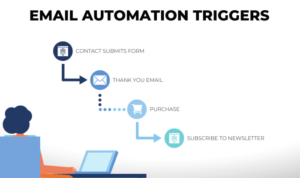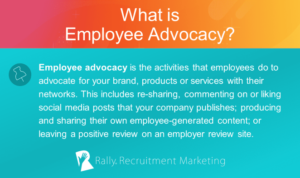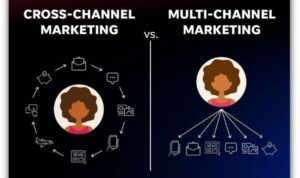Creating a Marketing Persona sets the stage for effective audience targeting and personalized marketing strategies. Dive into the world of marketing personas to unlock the secrets of connecting with your target audience on a deeper level.
Understanding Marketing Personas: Creating A Marketing Persona
Marketing personas are fictional characters created to represent different types of customers that a business may have. These personas are based on research and data about actual customers, helping companies understand their target audience better. They are crucial in marketing strategies as they allow businesses to tailor their messaging, products, and services to meet the specific needs and preferences of different customer segments.
Types of Marketing Personas, Creating a Marketing Persona
- Example 1: Fashion Industry
- A marketing persona named “Fashionista Fiona” could represent a young, trendy female shopper who values designer brands and follows the latest fashion trends.
- Example 2: Tech Industry
- A marketing persona named “Techie Tom” could represent a middle-aged tech enthusiast who enjoys staying up to date with the latest gadgets and technology advancements.
Benefits of Marketing Personas
- Helps in Targeting Specific Audience Segments
- By creating marketing personas, businesses can identify and target specific groups of customers who are most likely to be interested in their products or services.
- Improves Campaign Effectiveness
- Marketing personas enable companies to craft personalized and targeted marketing campaigns that resonate with the identified customer segments, leading to higher engagement and conversion rates.
- Enhances Customer Understanding
- By developing marketing personas, businesses gain a deeper understanding of their customers’ motivations, preferences, and pain points, allowing them to better address their needs and build lasting relationships.
Researching Your Target Audience
When creating a marketing persona, it’s crucial to conduct thorough market research to gather relevant data about your target audience. This process involves identifying the demographics, interests, behaviors, and pain points of the people you are trying to reach. By understanding your audience on a deeper level, you can tailor your marketing strategies to effectively engage and connect with them.
Identifying Demographics
- Demographics include age, gender, income level, education, marital status, and more.
- Tools such as Google Analytics, social media insights, and surveys can help gather demographic data.
- Understanding demographics helps in creating targeted messaging and personalized campaigns.
Analyzing Interests and Behaviors
- Interests can range from hobbies and activities to preferences in products or services.
- Behavioral data includes purchasing habits, online interactions, and brand loyalty.
- Tools like social listening, website analytics, and customer feedback can provide insights into interests and behaviors.
Identifying Pain Points
- Pain points are problems or challenges that your target audience faces.
- Conducting surveys, interviews, and focus groups can help uncover pain points.
- Addressing pain points in your marketing messaging can resonate with your audience and drive engagement.
Analyzing Competitor Strategies
- Studying competitor strategies can provide valuable insights into what works and what doesn’t in your industry.
- Tools like competitive analysis software, social media monitoring, and industry reports can help in analyzing competitor strategies.
- By understanding competitor tactics, you can identify gaps in the market and differentiate your brand effectively.
Creating Detailed Persona Profiles

Creating detailed persona profiles involves crafting fictional names, backgrounds, and preferences based on real data and insights gathered from research. By adding emotional triggers, goals, and challenges, the personas become more relatable and help in understanding the target audience better.
Steps for Creating Detailed Persona Profiles
- Start by giving each persona a fictional name and background that reflects the characteristics of your target audience segment.
- Incorporate real data and insights gathered from research into the persona profiles to ensure they are based on actual facts and behaviors.
- Add emotional triggers, goals, and challenges to make the personas more relatable and humanize them for better understanding.
- Validate and refine persona profiles through feedback and testing to ensure they accurately represent the target audience and their needs.
Implementing Personas in Marketing Strategies

Implementing personas in marketing strategies is crucial for tailoring content, messaging, and campaigns to specific audience segments. By understanding the needs, preferences, and behaviors of different personas, marketers can create more personalized and targeted marketing efforts.
Personalizing Content and Messaging
- Using personas allows marketers to create content that resonates with different audience segments, increasing engagement and relevance.
- Personalized messaging based on persona characteristics can lead to higher conversion rates and improved customer satisfaction.
- By addressing the unique pain points and motivations of each persona, marketers can deliver more impactful and effective communication.
Improving Customer Engagement and Conversions
- Personas help marketers understand their audience better, leading to more meaningful interactions and stronger relationships with customers.
- Tailoring marketing campaigns to specific personas can result in higher conversion rates and increased sales.
- Engaging with customers on a personal level through targeted content can enhance brand loyalty and advocacy.
Successful Marketing Campaign Examples
- Apple’s “Get a Mac” campaign targeted personas representing PC users, highlighting the benefits of Mac computers in a humorous and relatable way.
- Dove’s “Real Beauty” campaign focused on personas seeking authentic beauty standards, resonating with a diverse audience and driving significant brand growth.
- Coca-Cola’s “Share a Coke” campaign personalized products with consumer names, appealing to personas looking for unique and personalized experiences.
Adapting Personas Based on Market Trends
- Regularly updating personas is essential to stay relevant and responsive to changing market dynamics and consumer behaviors.
- Adapting personas based on evolving trends ensures that marketing strategies remain effective and aligned with the needs and preferences of target audiences.
- By monitoring market shifts and consumer insights, marketers can refine personas to address emerging opportunities and challenges in the market.





